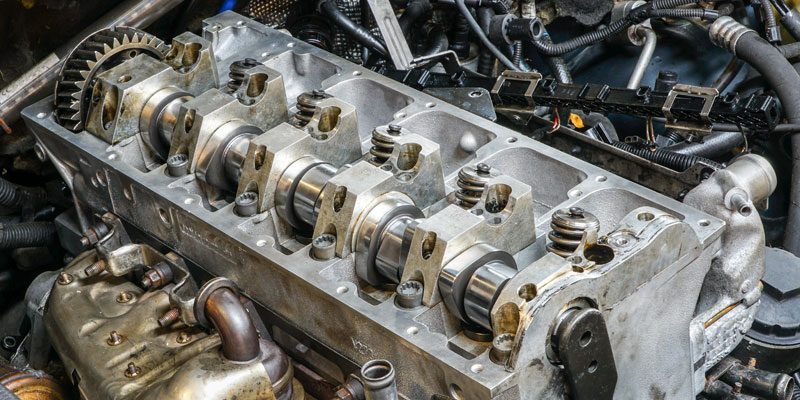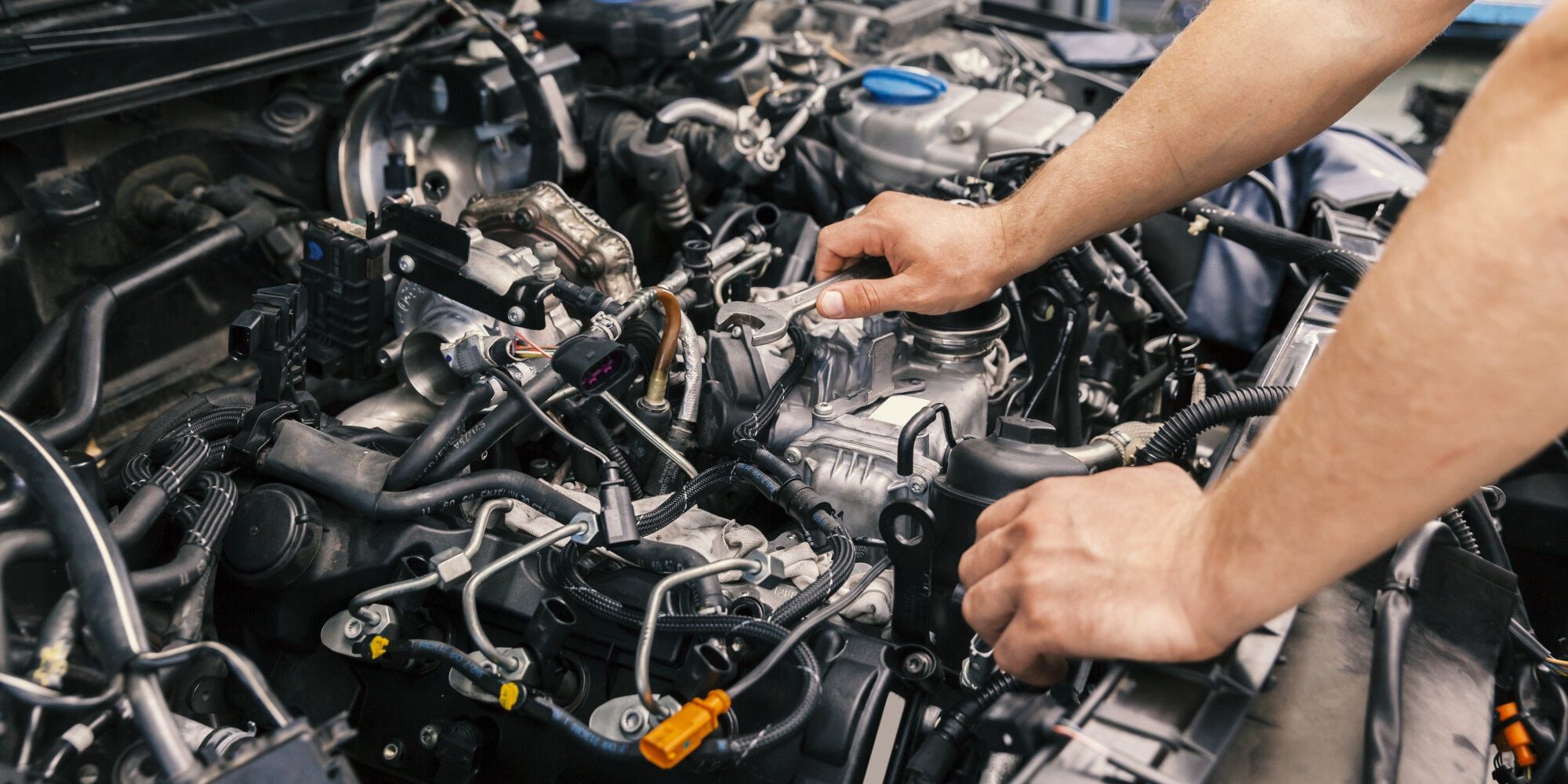If there are strange, distinct sounds coming from your engine or exhaust pipe, it may be an indication of your engine misfiring. It happens when the fuel, pushed through cylinders, but not ignited correctly, explode inside exhaust system.
You don’t have to be an expert to notice something is wrong. Maybe driving feels weird, maybe your car started producing popping, sneezing, weird sounds while on the road or even without moving. In this article we are going to learn about most common reasons of engine misfiring, how bad it is for your vehicle and how to deal with this annoying malfunction.
5 Most Frequent Breakdowns That Cause Misfiring

There are numerous causes for engine misfiring, let’s review some of them. Although keep in mind that only a trained mechanic, working in a car service, can judge about reasons for malfunctioning. You cannot identify or repair it yourself without proper equipment and maintenance experience.
Here’s what an auto mechanic is going to look for, when you take your car to them:
1. First of all he’s going to check spark plugs to identify if any of them got worn out.
Damaged spark plugs are the most common reason of misfiring. They are responsible for firing up cylinders in the engine and as time goes on, they can wear out. Fortunately, spark plugs are one of the cheapest spare parts in the car. They are easy to install and if they are the reason of misfiring, you are going to get your car back in no time.
2. Mechanic will check your fuel pressure levels.
If something is wrong with it, even deeper diagnostics would be needed, since there are multiple reasons for pressure being low. Ignoring the problem can lead to serious damage in your engine. It’s better to leave the car for repairs, if this problem was found, to let mechanics fix the malfunction and save parts that have not been damaged yet.
3. Another common cause for engine misfires are faulty ignition coils.
They help your car’s battery voltage transform into enough energy needed to start your engine. If the ignition coil wears off or breaks, it can cause your engine to misfire. Even worse, your car starts using more fuel than it used before.
4. When fuel and air don’t mix right inside the engine, it causes misfire.
Many different issues can disrupt proper mixing and flowing inside the engine. The mechanic will check any known factors, which range from a vacuum leakage to a faulty fuel injector.
5. Insufficient compression can be another cause due to some mechanical problems inside the engine.
Specially designed pistons inside each cylinder of the engine are responsible for correct compression. If any malfunction happens, cylinders cannot be completely sealed, which causes a misfire.
Are There More Reasons For My Engine To Misfire?

Unfortunately, yes. The engine is a complicated and multifunctional device. Maybe sensors or control modules of your car started acting up and need to be checked. In modern vehicles there are EGR and PCV systems. They are responsible for controlling and minimizing the amount of pollution created after the fuel gets burned. This equipment, if faulty, can affect the correct above-mentioned mixing of fuel and air.
How To Correctly Detect An Engine Misfire
Apart from strange sounds coming from the engine, you can detect it by overall feeling from driving. It can happen while driving at any speed, and how you feel it depends solely on the root cause of the problem. You can observe how responsive your car is. And detect changes from normal, everyday work of your engine.
- Accelerating feels weird.
Maybe you will feel like your vehicle has trouble building up speed. Any strange shaking, unreasonable jerking while accelerating is a good symptom of an engine misfire. You will notice strange hesitation from the engine when you press the gas pedal. Overall you should get an impression that your engine loses power from time to time.
- Strange hiccups while your car is standing still.
You can hear unnatural sounds from your engine while it’s working, even when your car is standing still. If you are not sure if it’s the car that produces those sounds, try listening from the outside. Maybe the noises come from exhaust pipe, it’s another sign of an engine misfire.
Finding out the source of the problem, if your car misfires while standing still, may be difficult for a mechanic. Best way to help him solve your problem is to provide as much information as possible. Tell him in details about any little signs you noticed that may point in the right direction. Let him listen carefully to the noise. Different sound tones point towards different breakages. For example, a hissing sound, if it can be heard from an engine bay, may indicate that there is a vacuum leak.

Some other break downs worth noting involve oxygen sensor malfunction or clogged fuel injector. These too can cause an engine misfire.
- Unnatural vibration when you slow down or stop.
If you feel like your engine is wobbling or grunting when it has to idle, for example when you stop at a traffic light, it means the engine is misfiring. It would seem like your engine has difficulty calming down after driving for some time. Despite that, when you build up the speed again, the engine might work normal again, but it doesn’t mean that the problem isn’t as serious.
- Abnormal noises starting from 1500 rpm.
The engine of your car should sound like it’s singing a rock ballad. It has to sound smooth, recognizable to you since the day you bought your car. If one day it started producing abnormal noises, you should do a check-up, because this is another symptom of the engine misfiring. You can identify these sounds easily. Banging or clapping, even if it’s quiet. Screeching, wheezing or sneezing. Even if it’s not a misfire that causes ill sounds, you should give your car for a full check-up. Unidentified failures or damages of significant car parts can lead to devastating consequences. It’s no big deal if you just need to spend some money for repairs. Taking care of your car is always the best option to avoid bad accident on the road.
Consequences Of Untreated Engine Misfires

When your fuel, not being ignited in time, blows up after passing through cylinders, other parts of your engine deteriorate. It happens since they are not suited for this chemical reaction.
For example, ceramic surface inside catalytic converter degrades after some time affected by misfires. Excessive heat can crack and disfigure valves or even cylinders themselves. Excessive heat appears because the mixture or air and fuel is not right. It’s called lean when there’s too much fuel. And rich, when there is too much air.
Remember, you shouldn’t drive around if you suspect something is wrong with the engine. Even if your vehicle seems to drive without hassle, but there are indications that something is wrong, you should immediately go to a car service. Otherwise, there may be consequences like costly repairs, if you postponed the check-up for too long, or potentially hazardous situation in a heavy traffic.
Can I Diagnose An Engine Problem Myself?
Not completely, but you can get a clue of what might be wrong using a diagnostic scanner. It’s a cheap device that reads trouble codes stored by your vehicle. The same tool is going to be used by a mechanic, although with additional check-ups and advanced knowledge in vehicles. Using such a tool yourself will only provide you with a trouble code generated by internal computer of your vehicle. It will not tell you for one hundred percent the source of the breakage and how to repair it. Only a professional car mechanic can do that.
How To Use A Diagnostic Tool

First you have to know if you need OBD-I or OBD-II diagnostic tool. OBD stands for On-Board Diagnostics. It’s easy to decide, you just have to know if your vehicle was manufactured before 1996 or after. Vehicles produced after 1996 will have OBD-II, the latest and current technology for diagnostics. Cars released before 1996 will have the older, outdated OBD-I.
1. Find a connector. Look at the plug of your diagnostics tool to get an idea of what you should be looking for. OBD-I connector can be found in various places, while OBD-II port is located somewhere under the dashboard. Note that OBD-II connector may be covered up, look carefully. If you can’t find it, check the user manual of your vehicle.
2. Turn the ignition off and carefully insert the plug into the connector. Make sure the plug is not upside down.
3. Turn on the ignition, your diagnostics tool will turn on. Insert information in the device if it asks you too. You may need to write about what type of engine you have, your VIN number and so on.
4. After you’ve finished setting up the tool, it will easily do it’s work. Write down the trouble codes it provided. Your tool may describe what the code means, or if it doesn’t just search the internet. Codes are deсiphered and posted in multiple articles. Go to a mechanic with information you got and he will explain what repairs your car requires.



